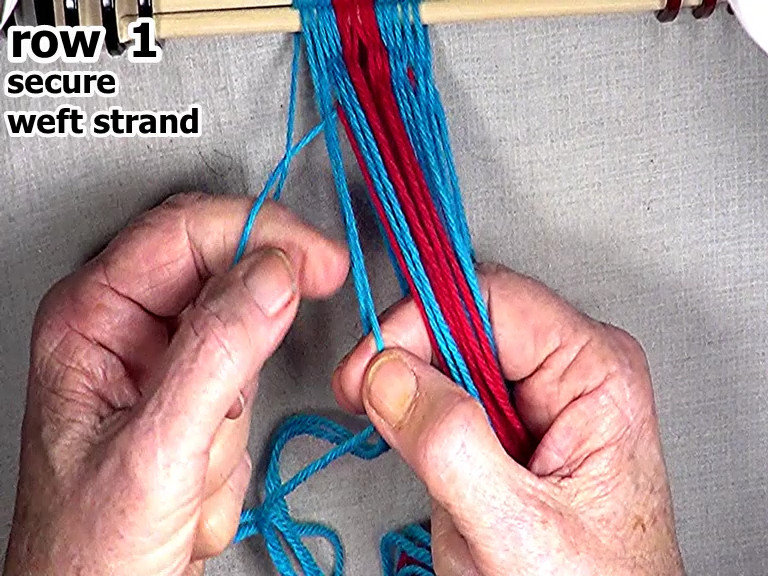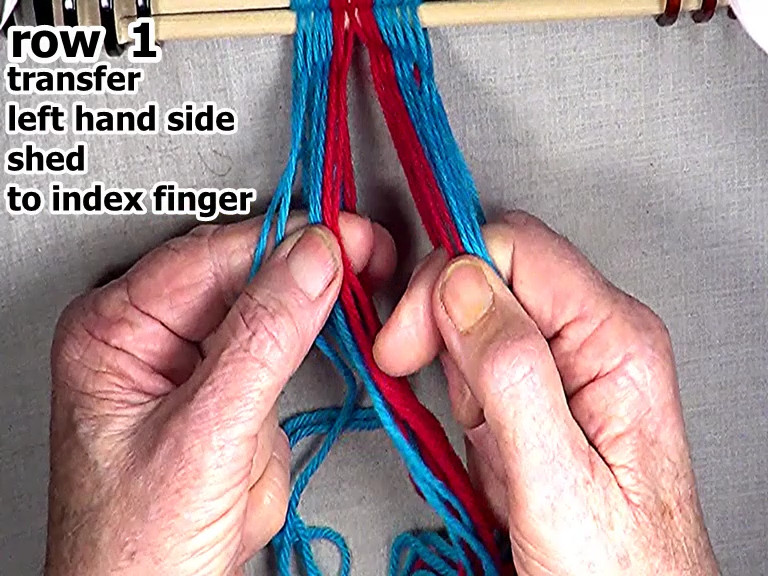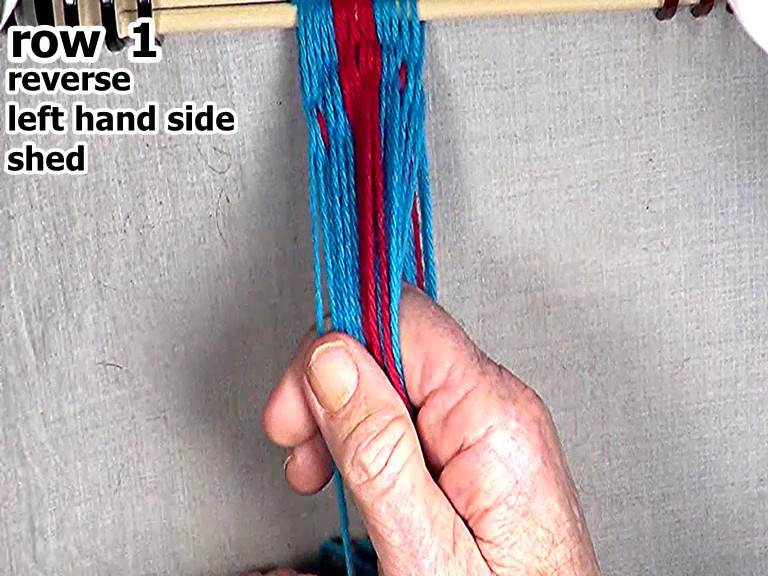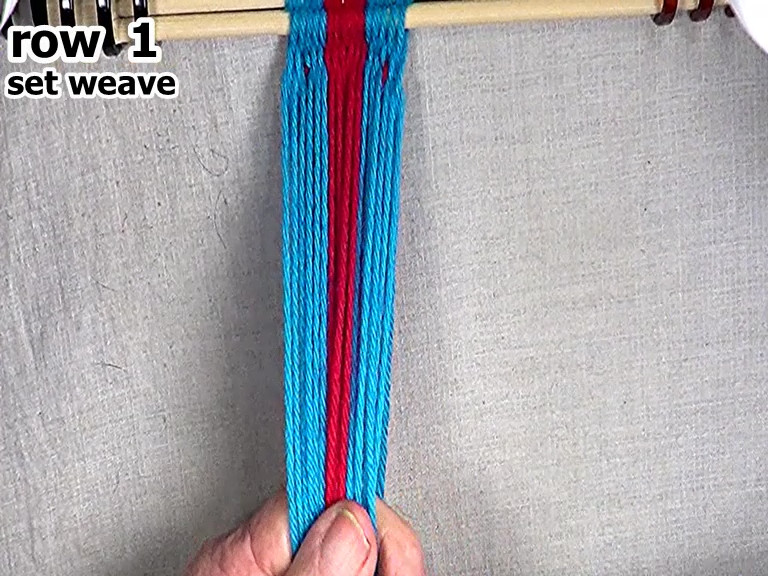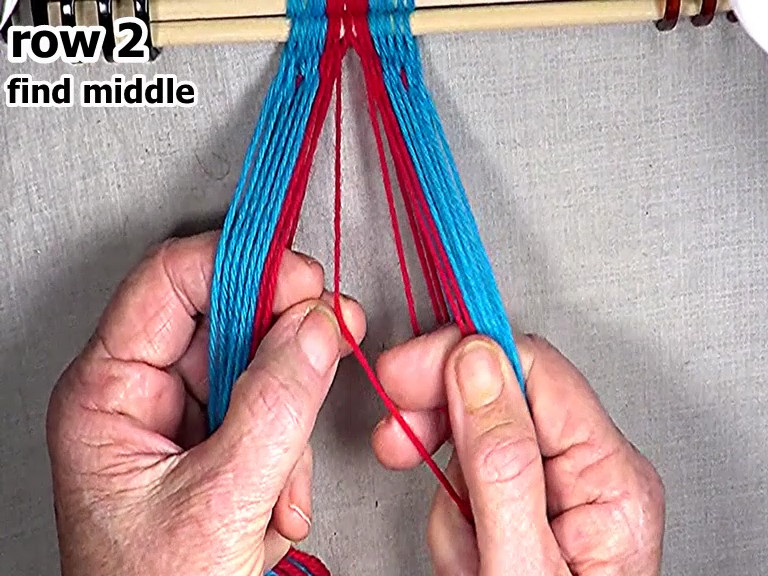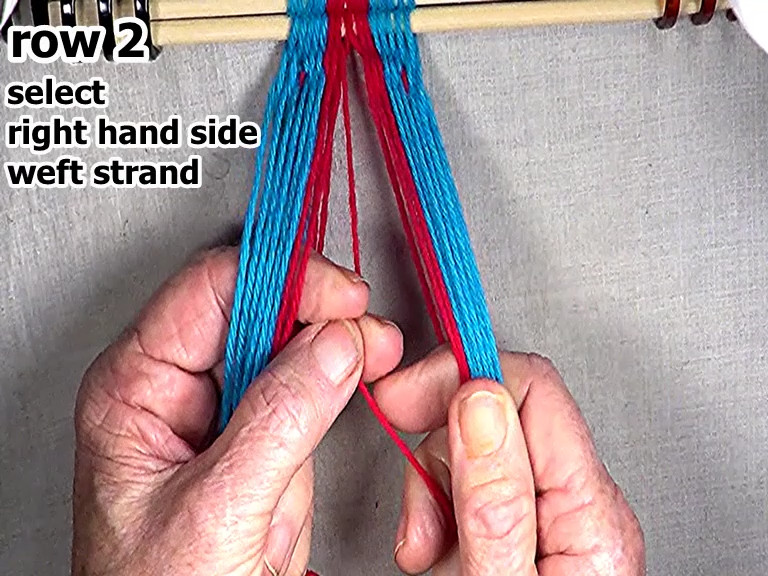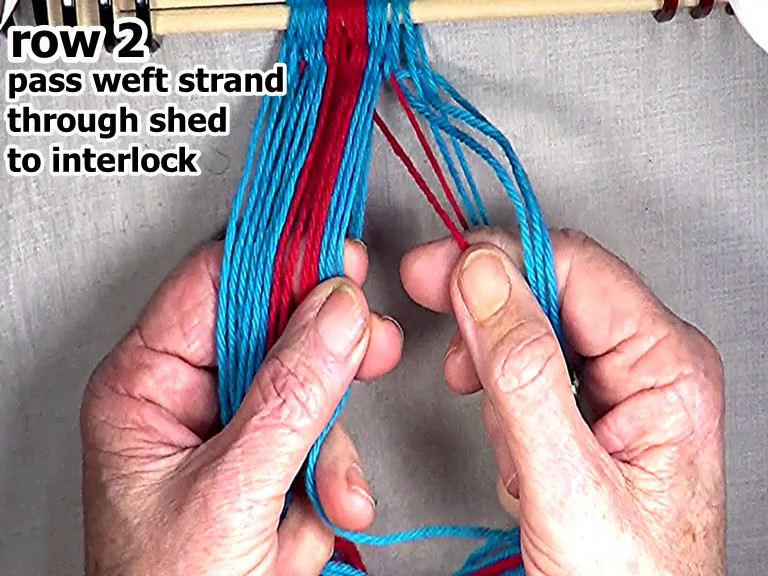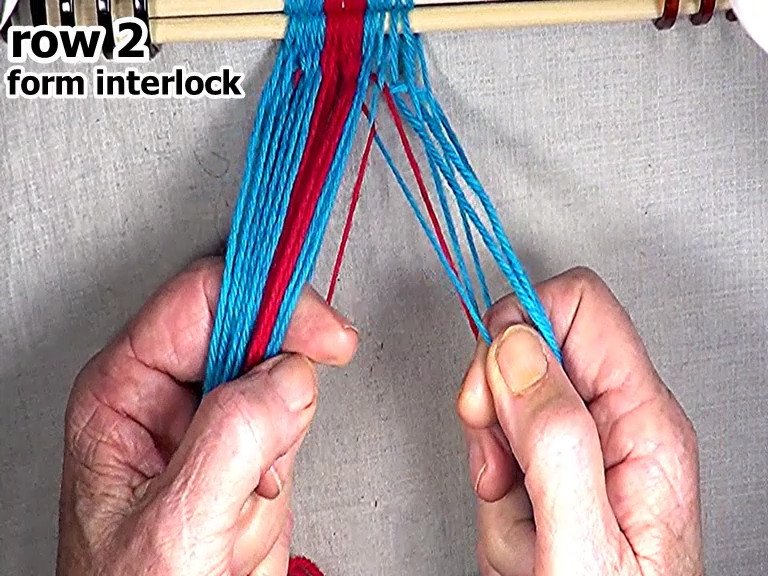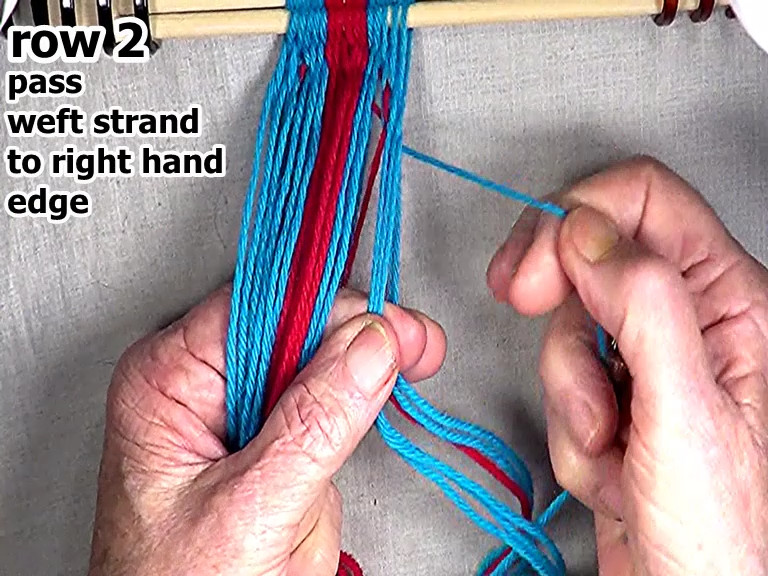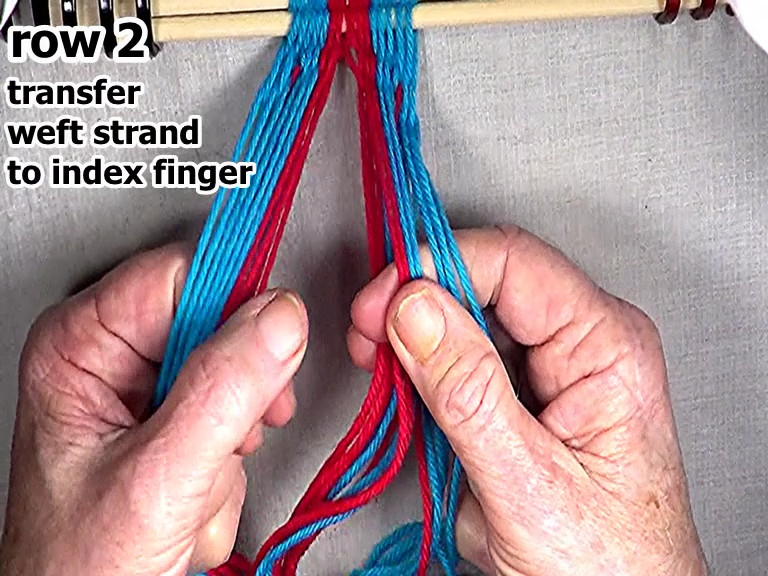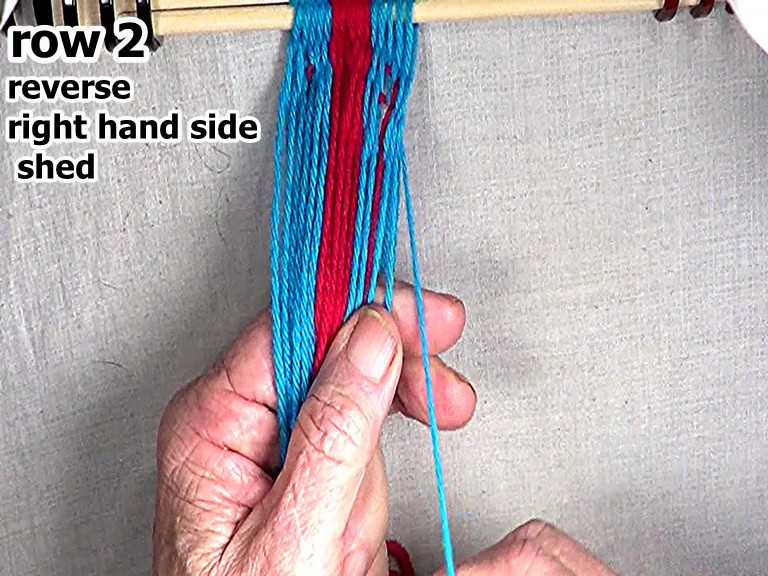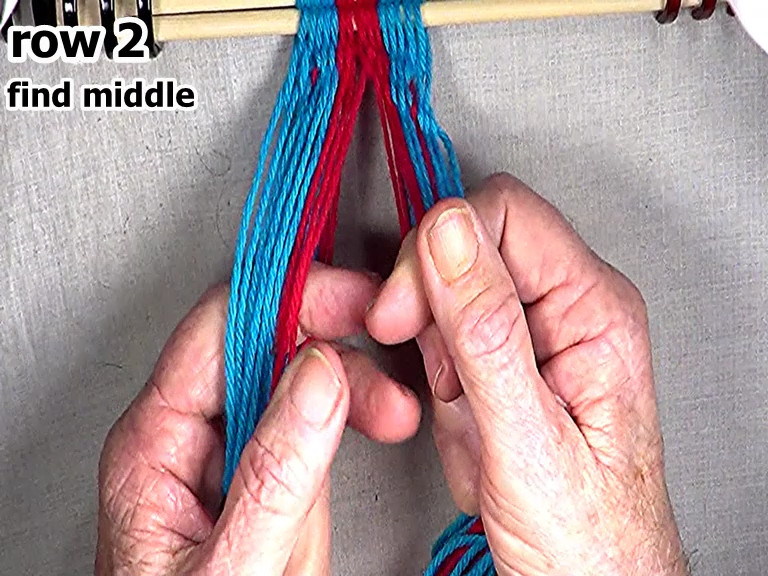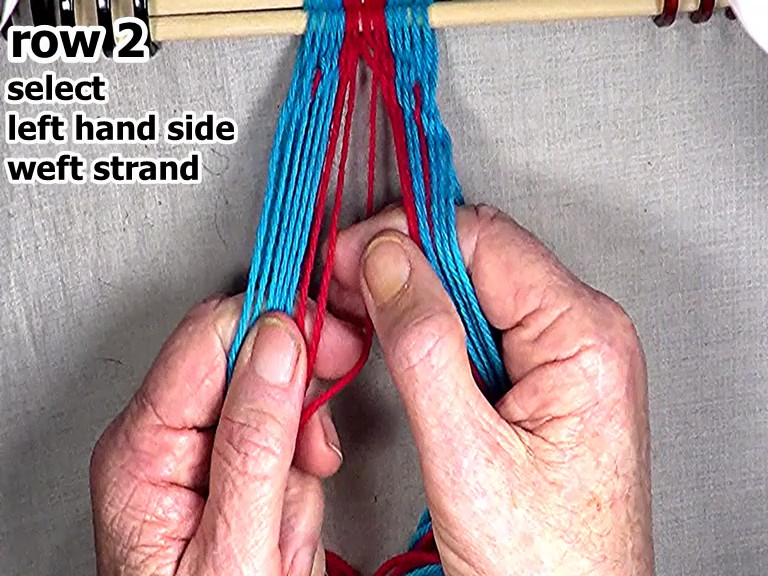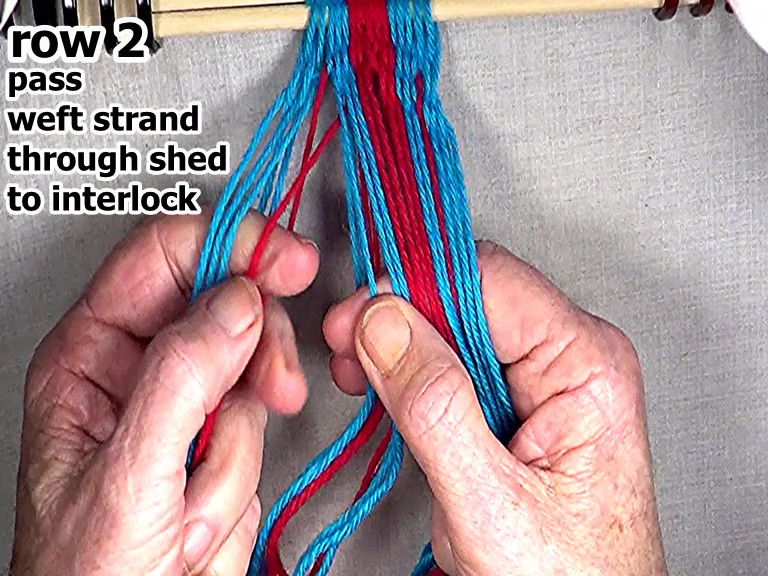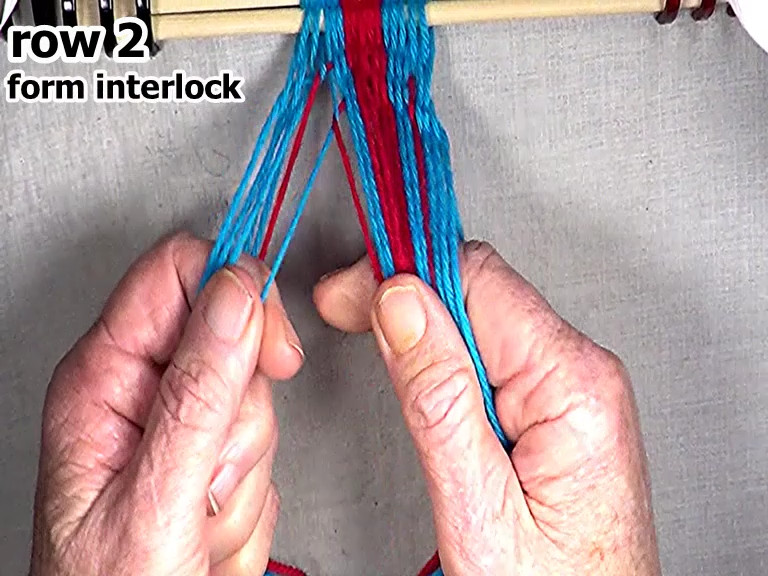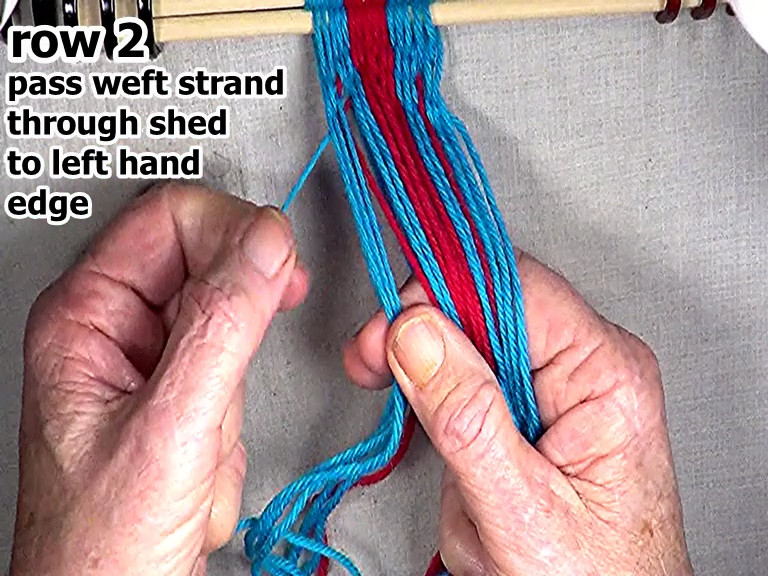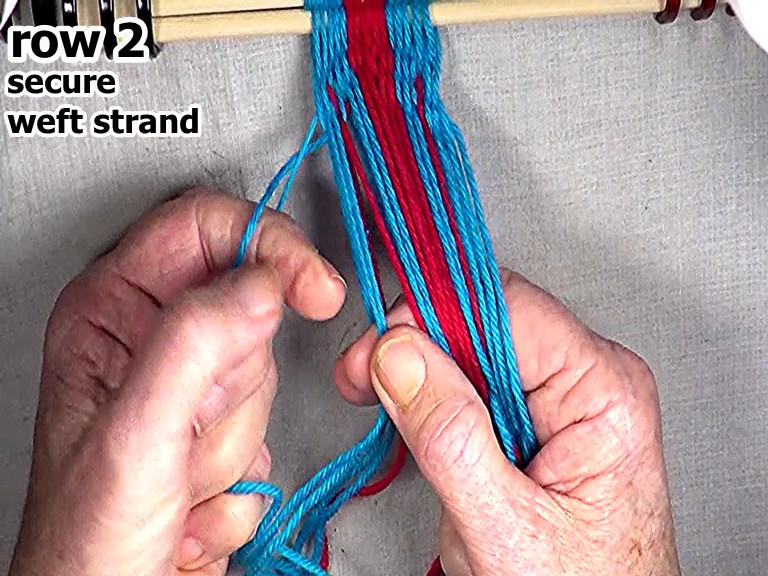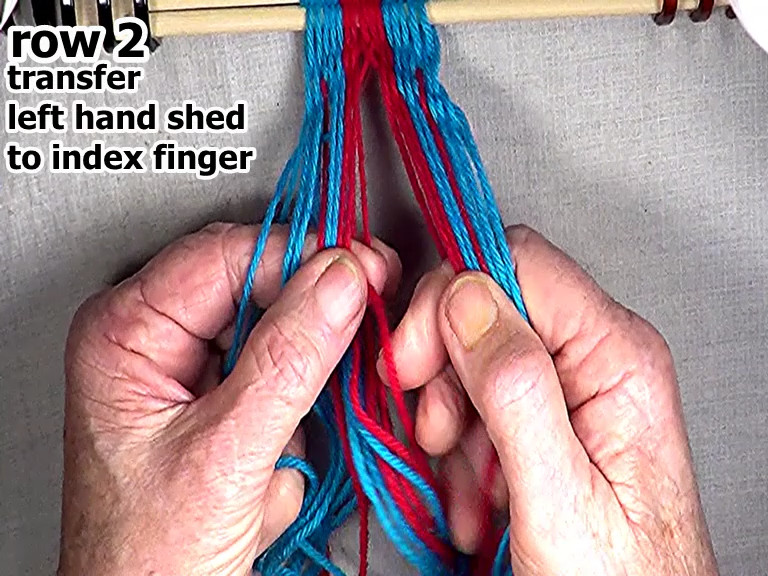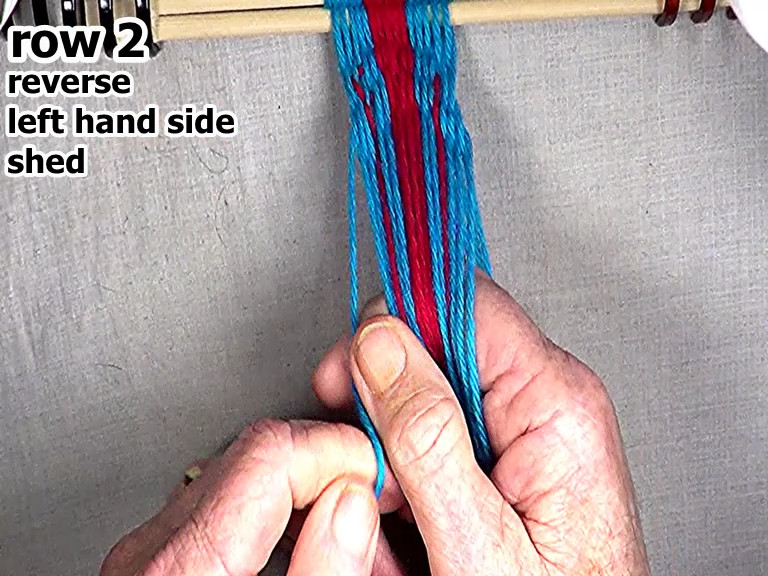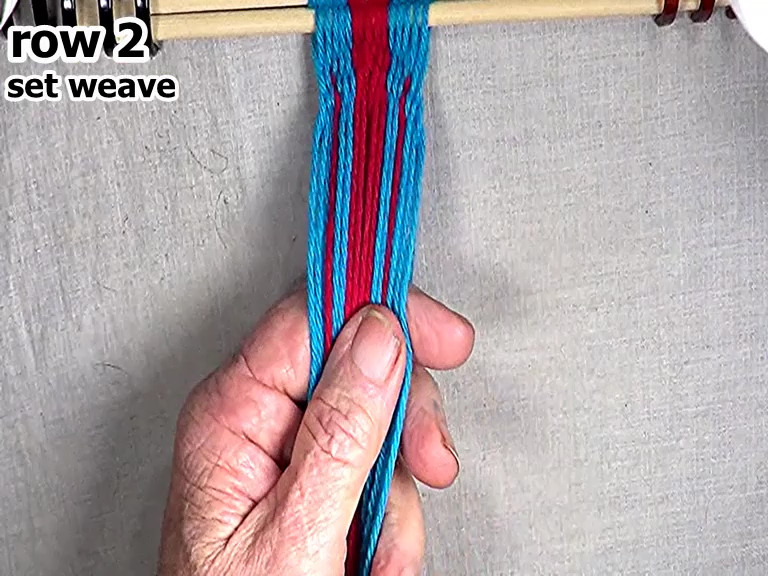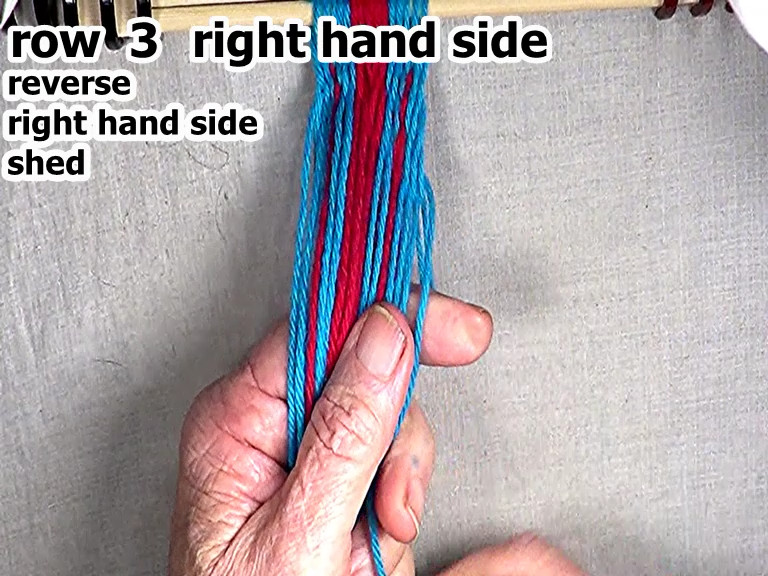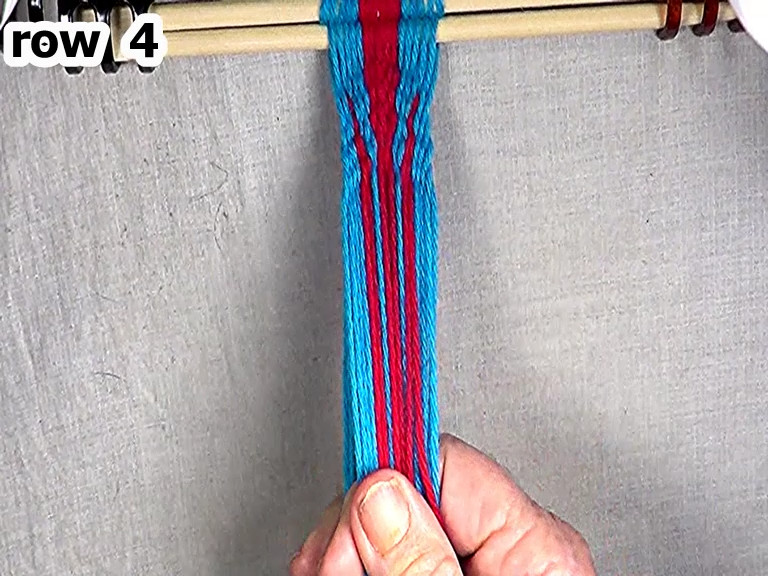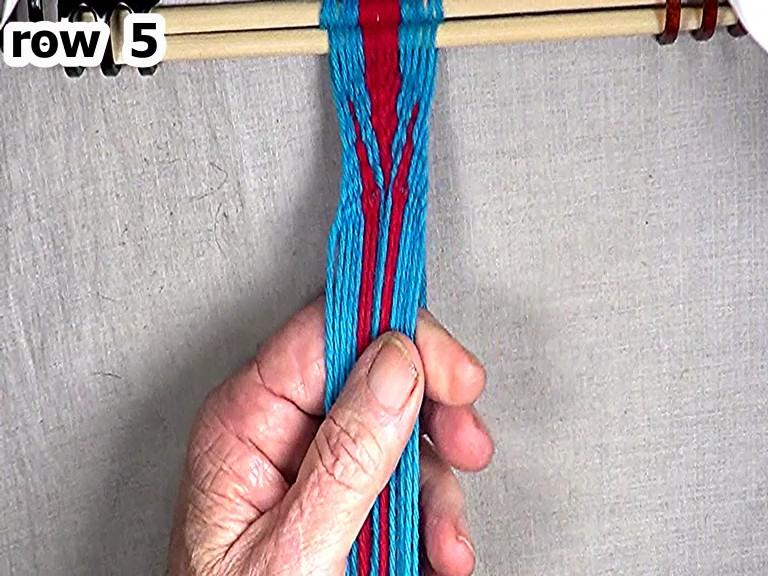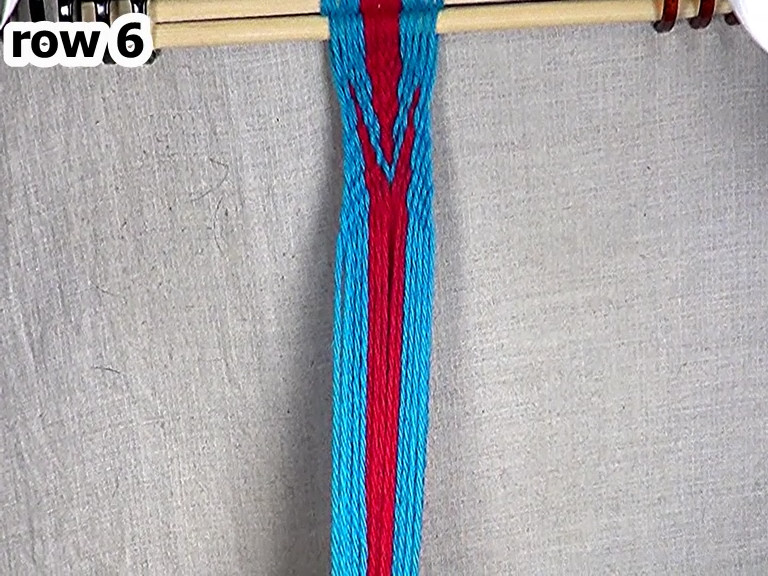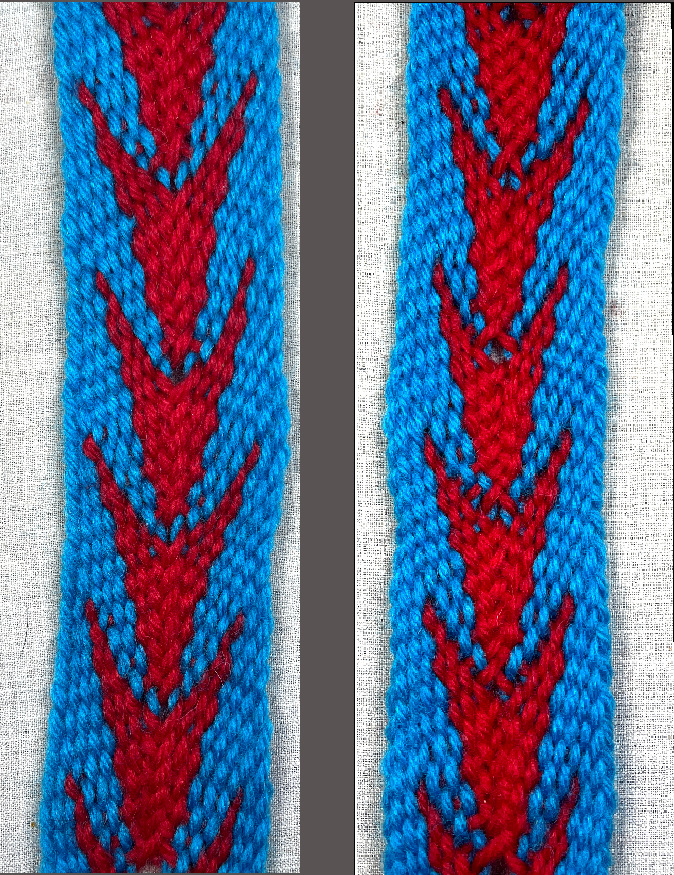|
Headstick Setup Configuration
The warp strands that are in the middle of the work-piece are in the bottom layer of the shed. 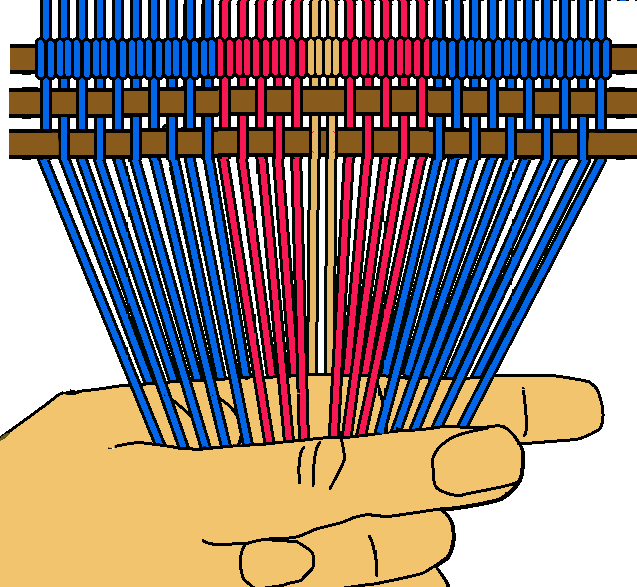
|
[figure-2]

[OBSERVE] The barbs on both sides of the arrowhead pattern are the same length. |
| Top of Page | Next |
| Find the middle of the work-piece. |
[figure-3] [click here to see video]
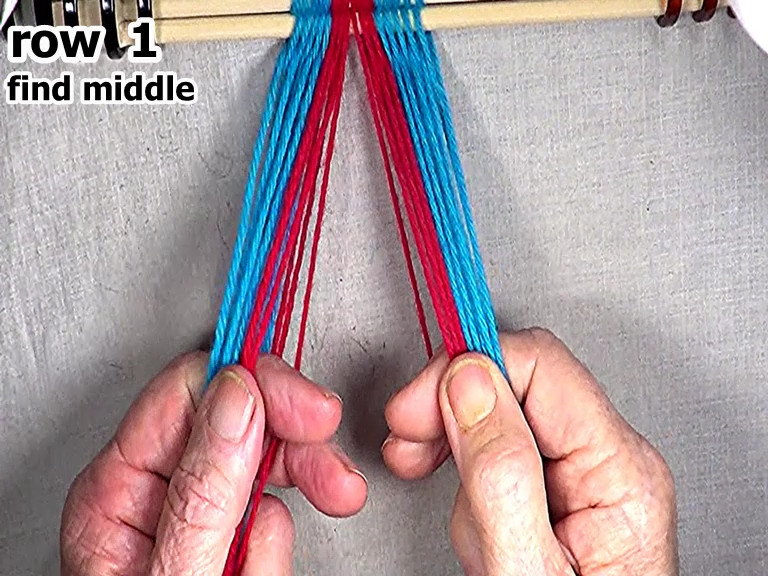
|
| Previous | Next |
Select the row 1 right hand side weft strand.
[NOTE] When starting a row of weaving, each row's right side weft strand is the first warp strand to the left of the middle. |
[figure-4] [click here to see video]
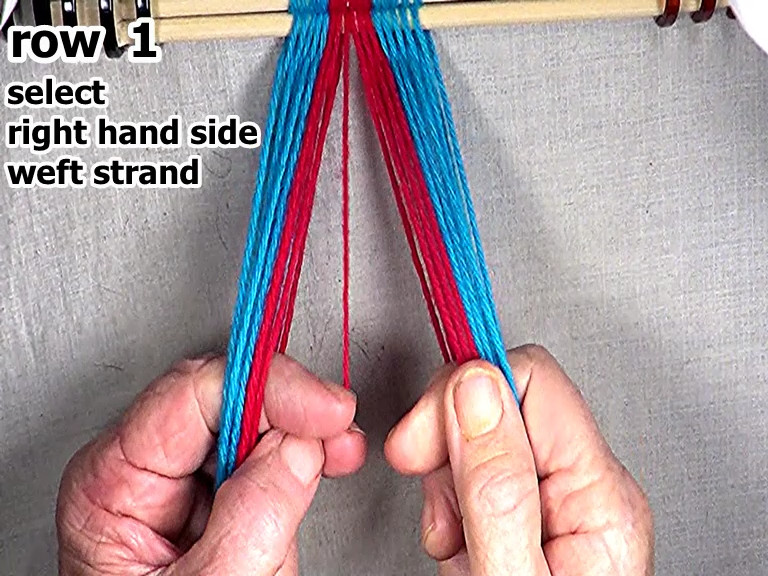
|
| Previous | Next |
Pass the weft strand through the open shed to right hand side background color warp strand that is one half the number of warp strands used for arrowhead design.
|
[figure-5] [click here to see video]
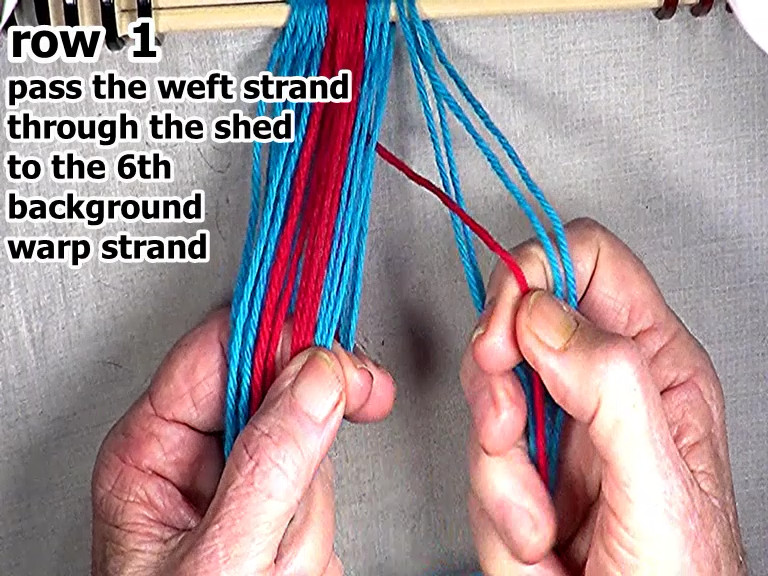
|
| Previous | Next |
Form the interlock in the row 1 right hand side weft strand.
Place the weft strand in the top layer of the shed.
[NOTE] The warp strand that was the 6th background warp strand becomes the next segment of the row 1 right side weft strand. |
[figure-6] [click here to see video]
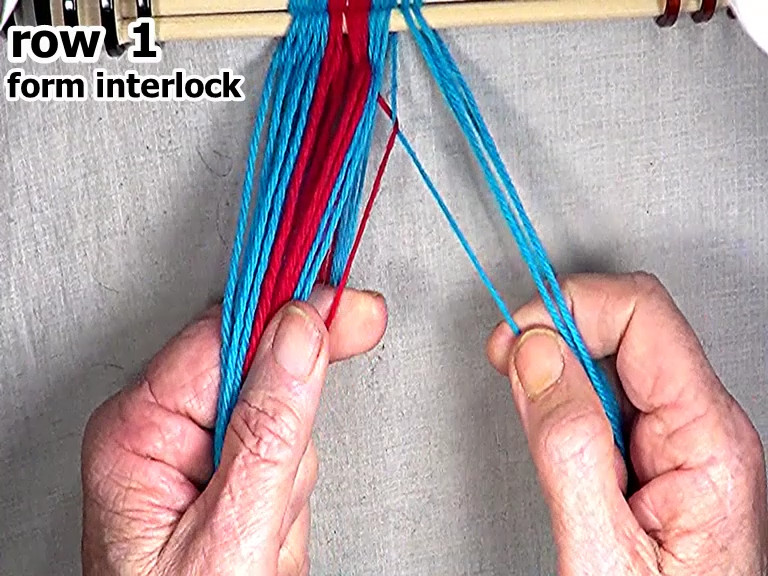
|
| Previous | Next |
| Pass the weft strand through the right hand side shed to the right hand edge of the work-piece. |
[figure-7] [click here to see video]
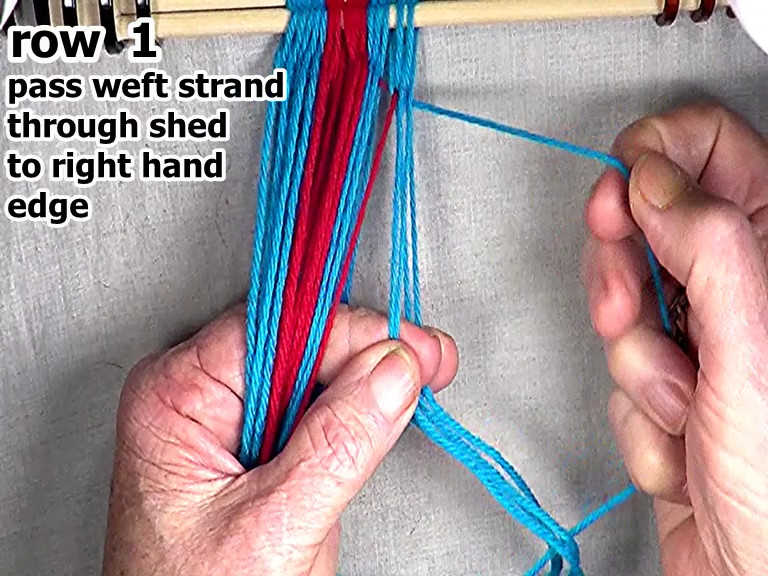
|
| Previous | Next |
Secure the weft strand.
|
[figure-8] [click here to see video]
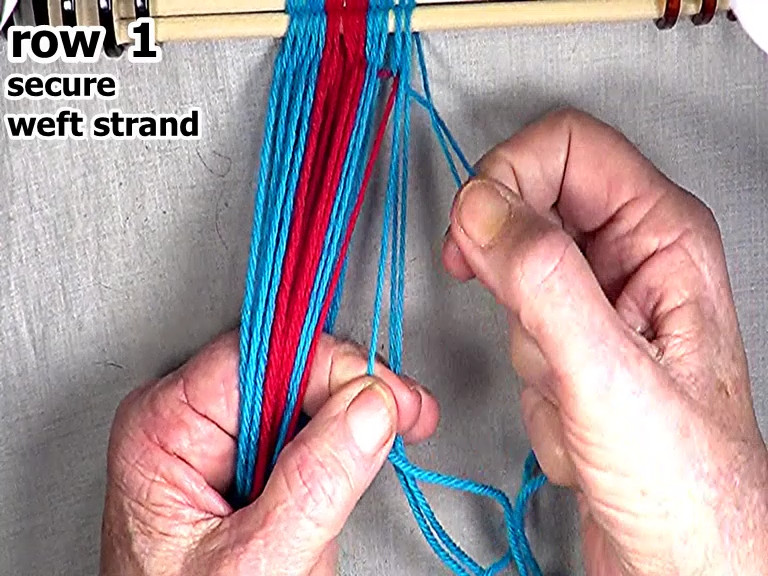
|
| Previous | Next |
Transfer the right hand side shed to the right hand index finger.
[figure-9] [click here to see video]
|
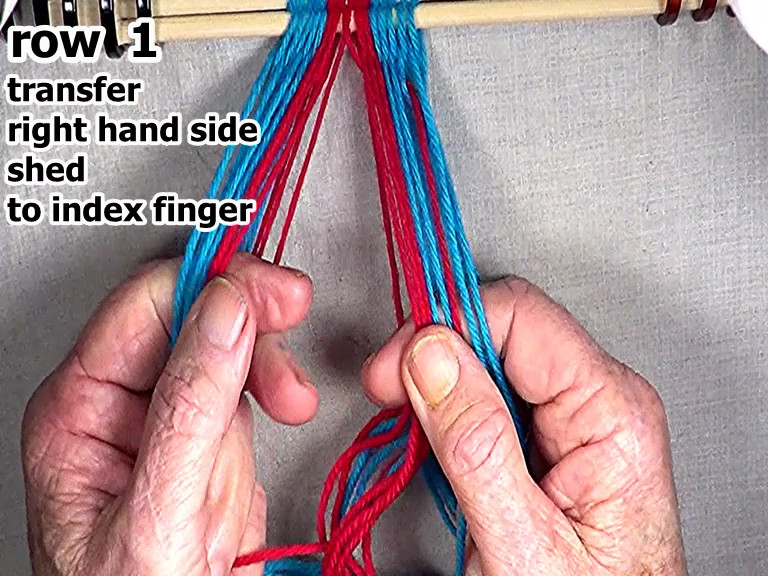
|
| Previous | Next |
Reverse the right hand side of the row 1 shed.
[NOTE] make sure that the over/under configuration is maintained. Keep the warp strands parallel. |
[figure-10] [click here to see video]
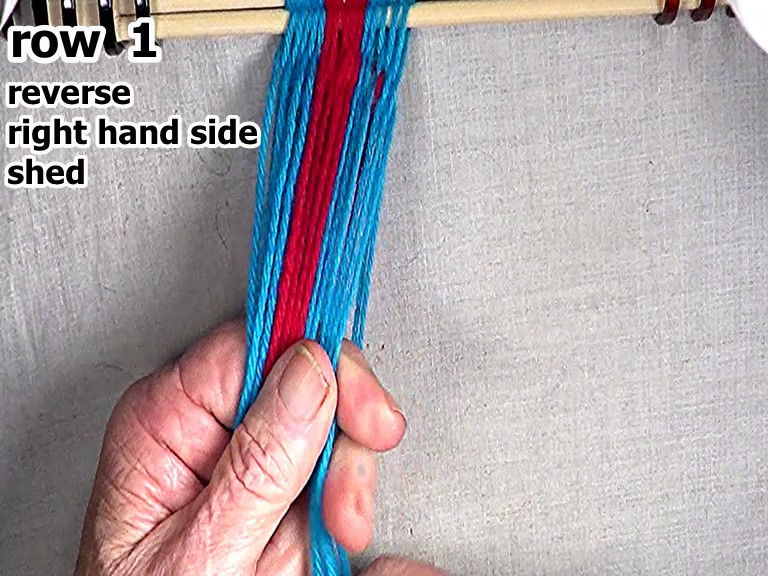
|
| Previous | Next |
| Find the middle of the work piece. |
[figure-11] [click here to see video]
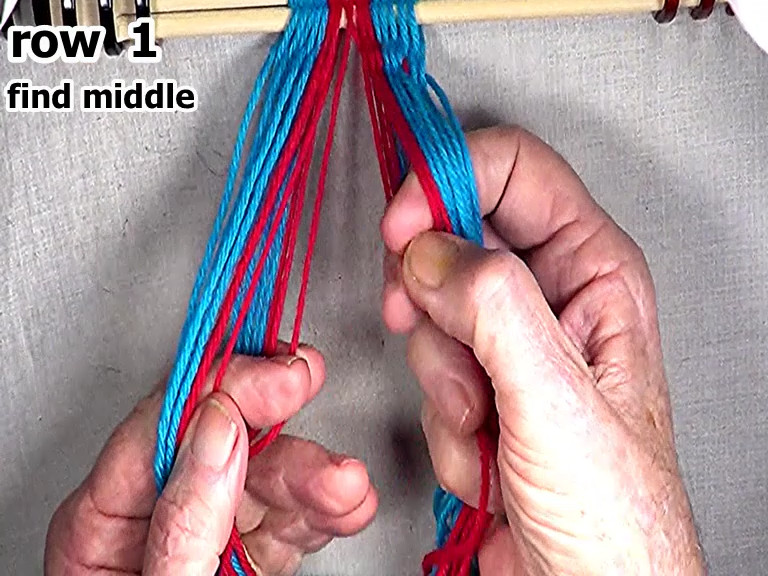
|
| Previous | Next |
Select the left hand side row 1 weft strand.
[NOTE] When starting the left hand side of a row of weaving, each row's left side weft strand is the first warp strand on the left hand side of the right hand side shed. |
[figure-12] [click here to see video]
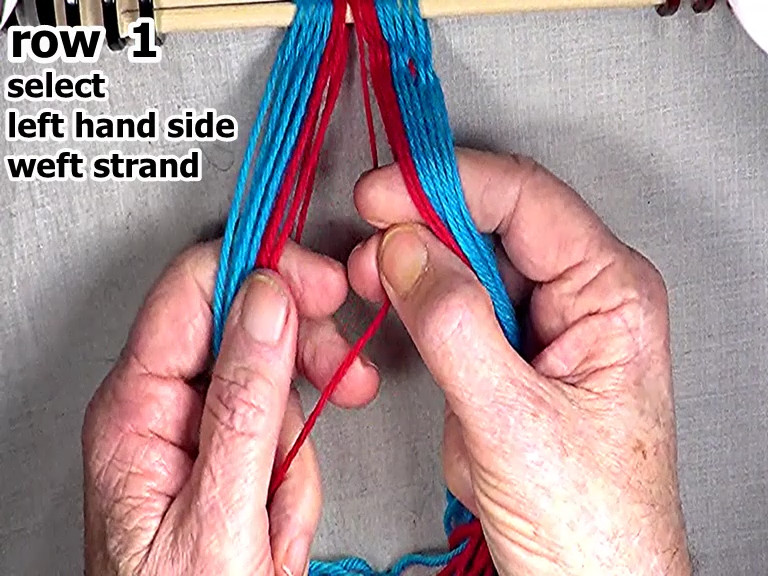
|
| Previous | Next |
| Pass the weft strand through the left hand side of the shed to the 6th background warp strand. |
[figure-13] [click here to see video]
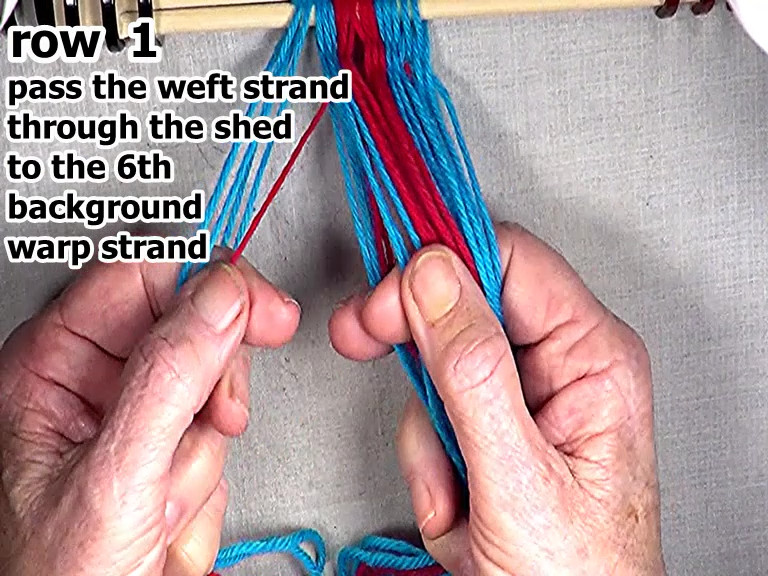
|
| Previous | Next |
Form the interlock in the row 1 left hand side weft strand.
Place the weft strand in the top layer of the shed. The warp strand that was the 6th background warp strand becomes the next segment of the row 1 left side weft strand. |
[figure-14] [click here to see video]
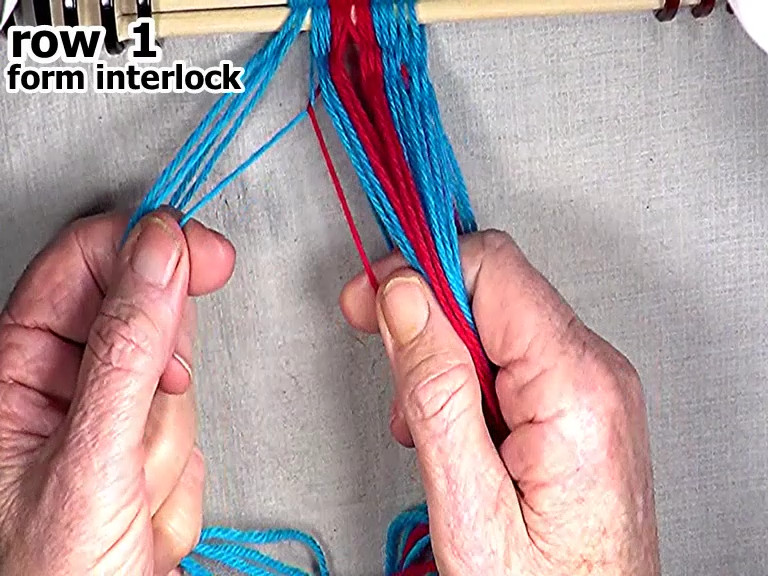
|
| Previous | Next |
| Pass the weft strand through the shed to the left hand edge of the work-piece. |
[figure-15] [click here to see video]
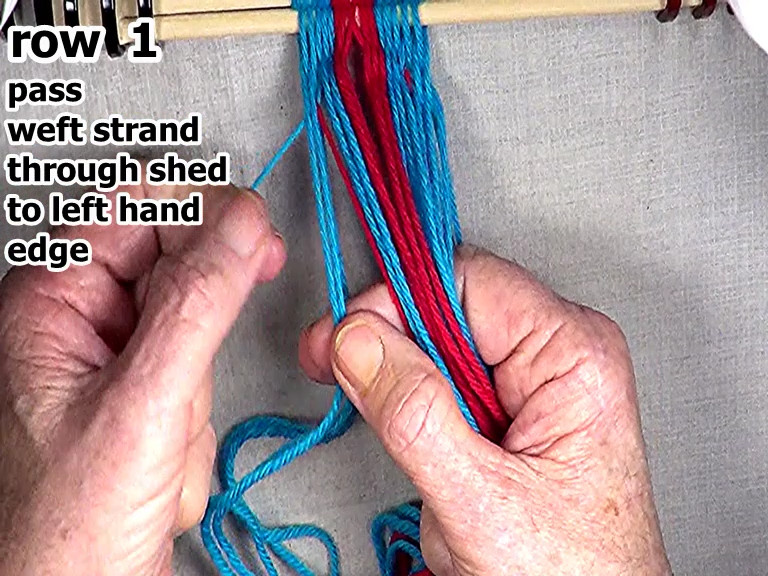
|
| Previous | Next |
